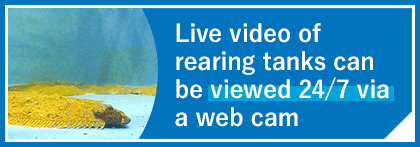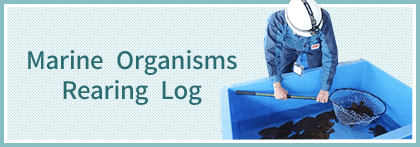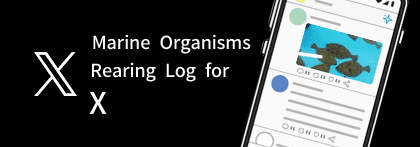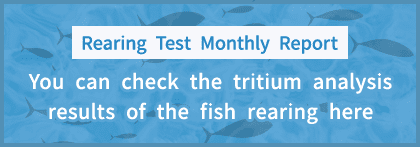Purpose

We will demonstrate that the water to be discharged is safe “in a visible manner”.
While ensuring safety in the design and operational management of the facilities for ALPS treated water discharge into the sea, through marine organisms rearing test, we will also demonstrate that the water to be discharged is safe “in a visible manner”, thereby reducing the adverse impact on reputation.
Disclosure of rearing condition
The following data is being disclosed in order to demonstrate in a visible manner that there is no detrimental impact on marine organism life.
Results of rearing condition
Results and insights of tritium concentrations in flounder body
Free water tritium (FWT): Tritium that exists in the form of water in living bodies
Organically bound tritium (OBT): Tritium that is organically bound with carbon and other molecules in living bodies
- In graphing the measurement results, points below the detection limit and suspected adulteration were removed.
- Similar analysis results have been reported in the following literature in the past.
FY 2009 Experimental Study on Carbon Transfer in Land and Aquatic Ecosystems, Research Institute of Environmental Science and Technology
【Overview of the video】
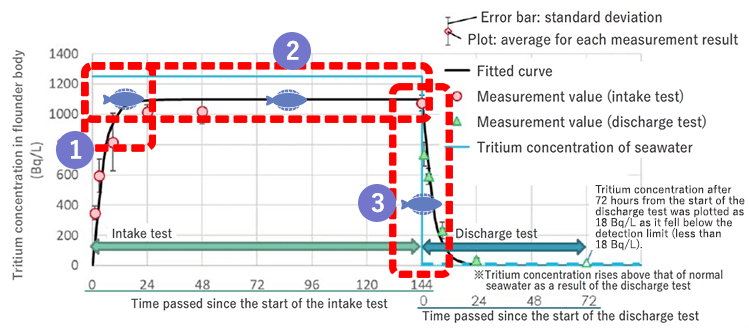
- The tritium concentration in flounder body does not exceed the concentration of seawater containing ALPS treated water in which they are grown.
【Tritium intake test】 - The tritium concentration is maintained at the same level as the seawater in the growing environment after a certain period of time.
【Tritium intake test】 - The tritium concentration in flounder body quickly decreases as time passes when they are returned to normal seawater.
【Tritium discharge test】
- The results for abalone and seaweed were consistent with the results for flounder. The OBT concentration test for flounder is currently being conducted.
Overview of rearing test
Rearing tests will be conducted in both “seawater” and “ALPS treated water diluted with seawater” and the growth of the organisms in their respective environments will be compared against each other.We will confirm that the tritium concentration in a living body reaches an equilibrium after a certain period of time and does not exceed that of the environment which it was reared in.
-
Flounder, abalone and seaweed that inhabit off the coast of Fukushima Prefecture have been selected for rearing.
Organisms to be reared [Before the start of discharging ALPS treated water into the sea]
- Fish
- Flounder (young fish) - around 800 flounders
- Shell
fish - Abalone (young shellfish) - around 800 abalones
- Sea
weed - Sea lettuce, Gulfweed - around several kg
-
Rearing in a closed circulation system with careful handling of radioactive materials.
-
Measure and assess tritium concentration, etc. in all rearing organisms.
Environment set in rearing test
-
Normal
sea
water Normal seawater [Taken from around the power station]
-
Before the start of discharge into the sea
Condi
tion1 ALPS treated water diluted with seawater [Tritium concentration: approx. 1,500Bq/L]Considering that the operation target value of tritium in ALPS treated water after being diluted with seawater is less than 1500Bq/L, the tritium concentration in Condition 1 is adjusted to less than 1500Bq/L.
ALPS treated water will be discharged while complying with the tritium concentration of less than 1,500Bq/LConcentration of upper limit for discharge and a total annual tritium amount of less than 22 trillion Bq
-
Before the start of discharge into the sea
Condi
tion2 ALPS treated water diluted with seawater [Tritium concentration: approx. 30Bq/L]Considering the result of dispersion simulation that the tritium concentration around the discharge tunnel outlet is approx. 30Bq/L, the tritium concentration in Condition 2 is adjusted to approx. 30Bq/L.
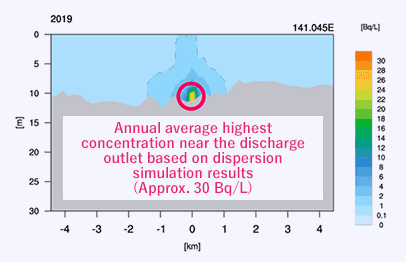
-
After the start of discharge into the sea
Condi
tion3 Water to be discharged to the environment [Tritium concentration: approx. 1500Bq/L]After the start of discharge into the sea, rearing test will be conducted also in the water to be discharged (Tritium concentration of approx. 1500Bq/L).

Rearing test status
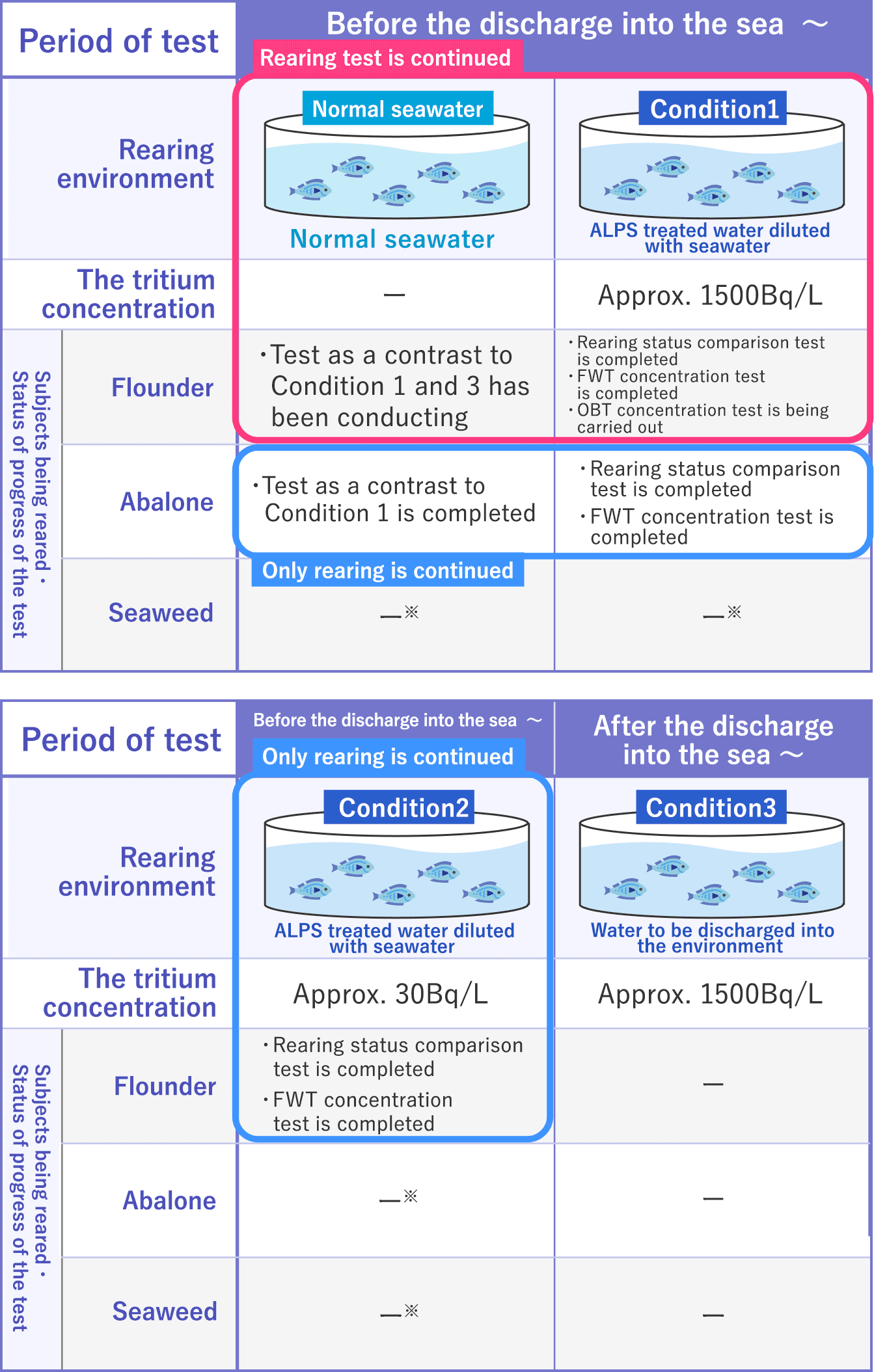
Rearing is completed and will not be conducted in the future
Achievement so far
As the state of filtering system (bacterial colonization) and the condition of flounder growth have been confirmed to be favorable after the functionality of the rearing test tank and other equipment were verified for over a half year, the rearing test has begun on September 30, 2022.
2022
March 17
Start of rearing practice in normal seawater
Subject: 140 flounders
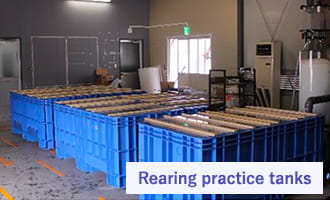
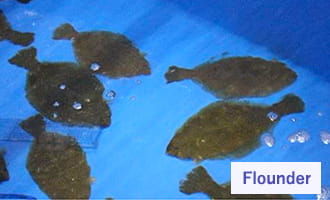
June 9
We found parasites in a fillet of weakened flounder
For preventing the spread of parasites, we added a UV sterilizer to each tank and bathed flounder in salt water
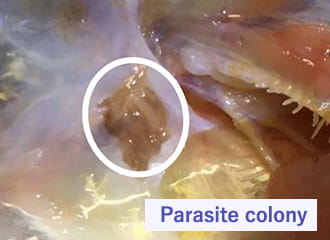
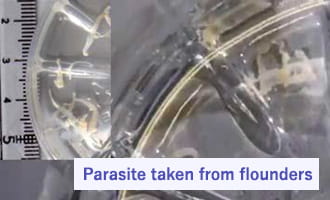
July 21
Start of rearing practice in mockup tanks
Subject: 80 flounders, 30 abalones and about 2kg of seaweed
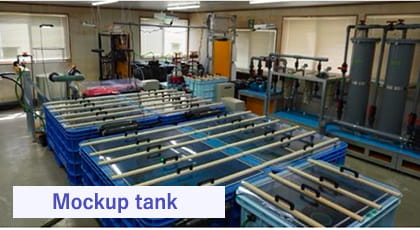
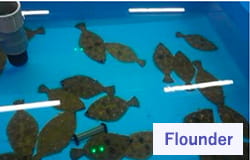
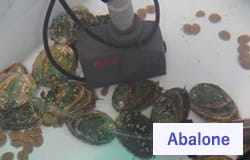
September
13
Start of rearing in rearing test tanks for getting flounder used to the environment
Brought new 800 flounders to rearing practice tanks
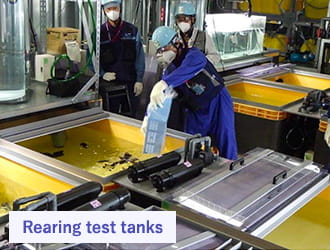
September
30
Start of flounder rearing test
October
25
Start of abalone rearing test
2023
May
9
Start of seaweed rearing test



